India's water refugees who live in cattle camps
- Published
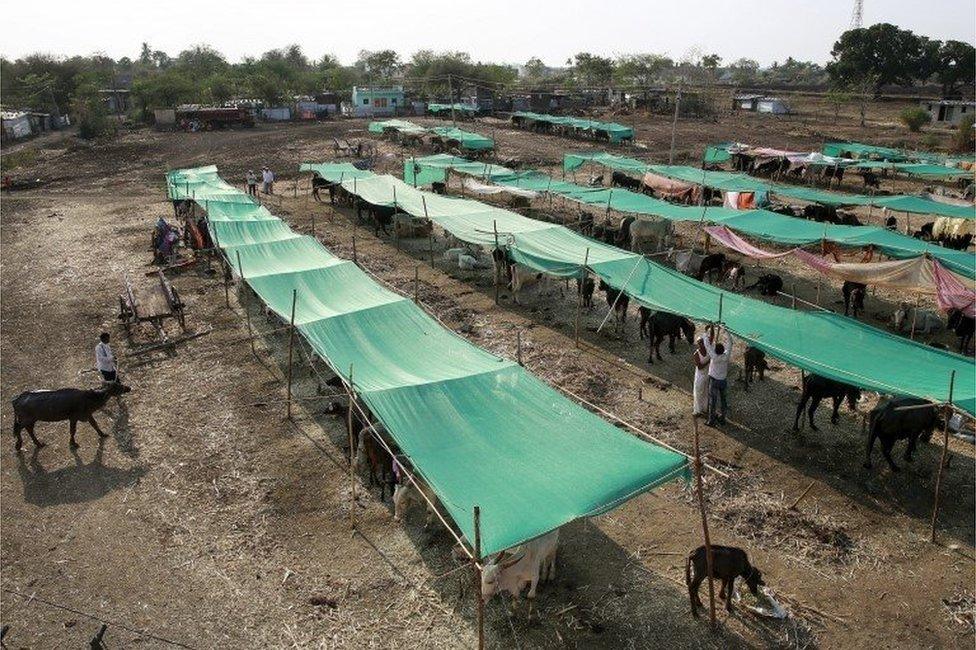
There are more than 350 cattle camps sheltering 380,000 animals in Maharashtra
Five months ago, the Gholap family - three brothers and their wives - moved from their drought-hit village home in Beed in the western state of Maharashtra to a squalid shantytown of straw-and-tarpaulin cattle shelters.
They brought along their 21 head of cattle, some clothes and utensils, a rope bed, and a wall calendar to keep track of time. Back in the village, it hasn't rained for the past three years, and their three-acre farm lies barren. There's no fodder for the animals, and wells are dry. Most of the young men in the village have migrated to the cities in search of work.
So the Gholap family left their four school-going children home with their ageing parents, to forage for water and fodder. At the shelter in Palwan, they found both, plentiful and free, provided by the government. "If we go back home we will starve," says Bal Bhim Gholap. "This is our home now."
The shelter in Palwan is one of 267 cattle camps, external in Beed - one the 256 drought-hit districts in India - that provide free water and fodder to animals. More than 280,000 cattle along with thousands of farmers are packed into these camps.
'Dismal life'
Maharashtra has been ravaged by drought - many say it equals the worst in a century, external - and the Gholap brothers are among the estimated nine million affected farmers. Beed is possibly the worst-affected district.
Appa Sahib Maske is one of Mr Gholap's neighbours. With a 15-acre plot, the 35-year-old was a well-to-do farmer not so long ago. But drought is a great leveller in rural India, and now Mr Maske is also living in the shelter with 20 cattle, leaving his five children at home with his parents. "I am stuck with so much land and no crops. I now live a dismal life here."
It's not difficult to see why.
Men and animals from 30 villages near and far, live here under tatty tarpaulin and straw, and defecate in the open. Manure, fodder and plastic tanks line the unpaved alleys. The farmers wake up at the crack of dawn to milk their cows and sell it at the nearest market. They bathe and feed the animals on their return.
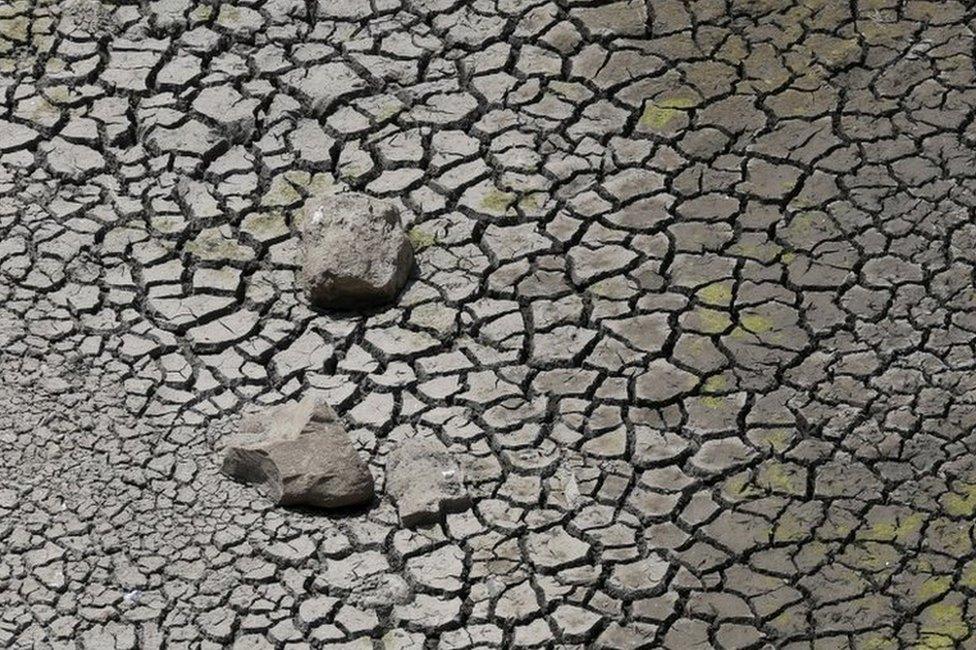
The main Manjara river has been dry since last year
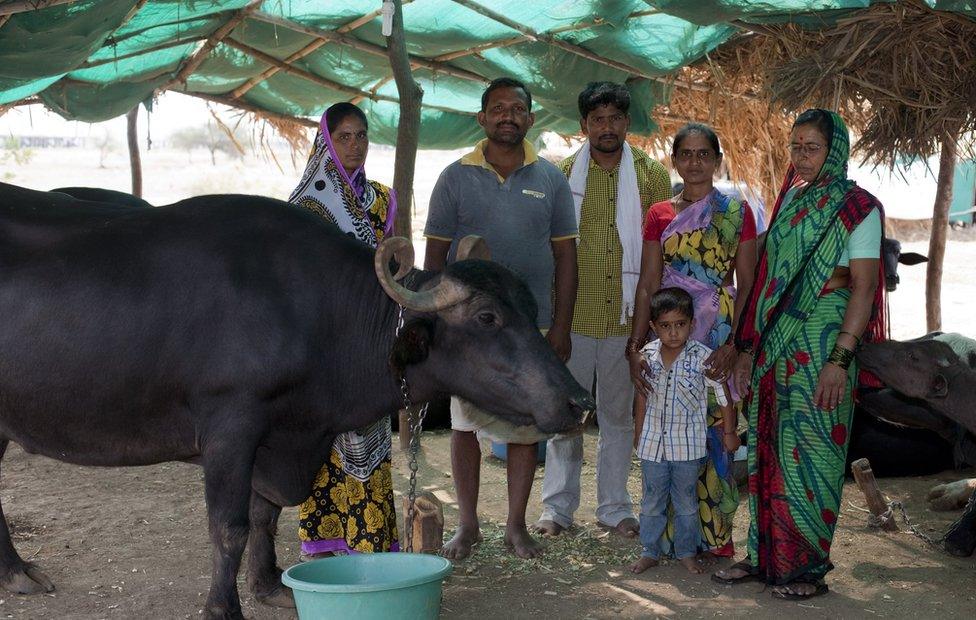
Entire families have moved to the shelters with their animals
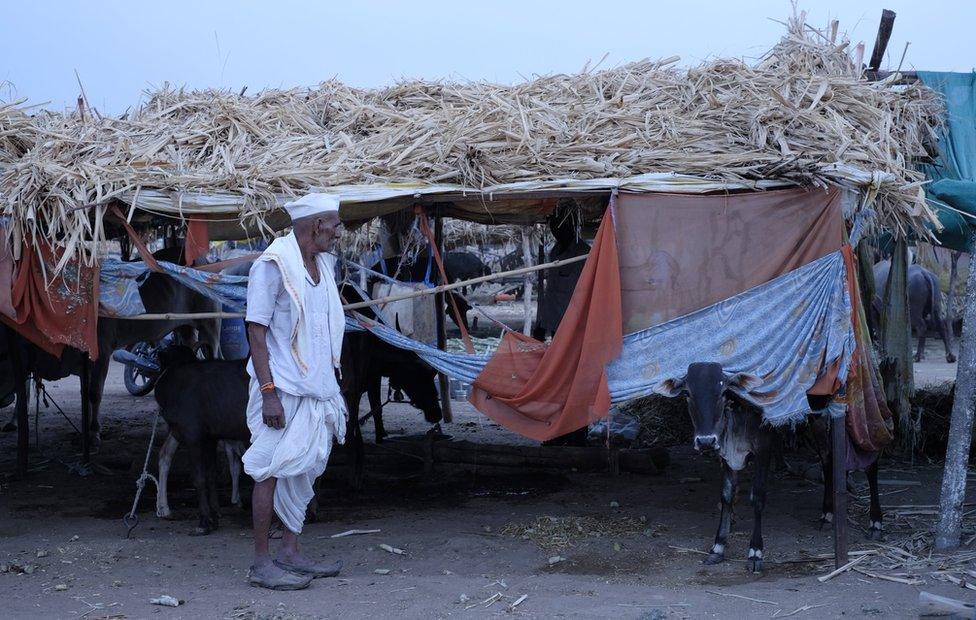
Farmers in the Palwan camp come from 30 villages, near and far
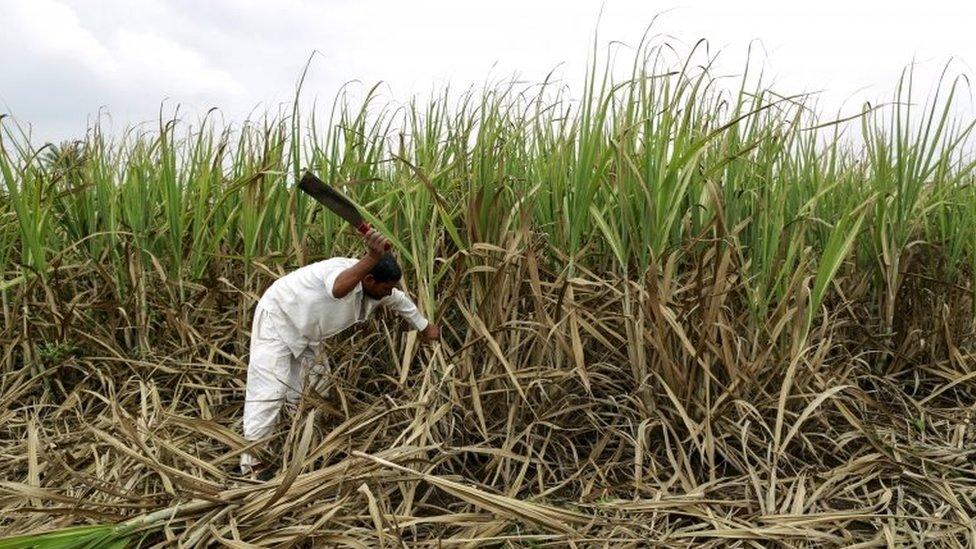
Sugarcane farming is being blamed for depleting ground water
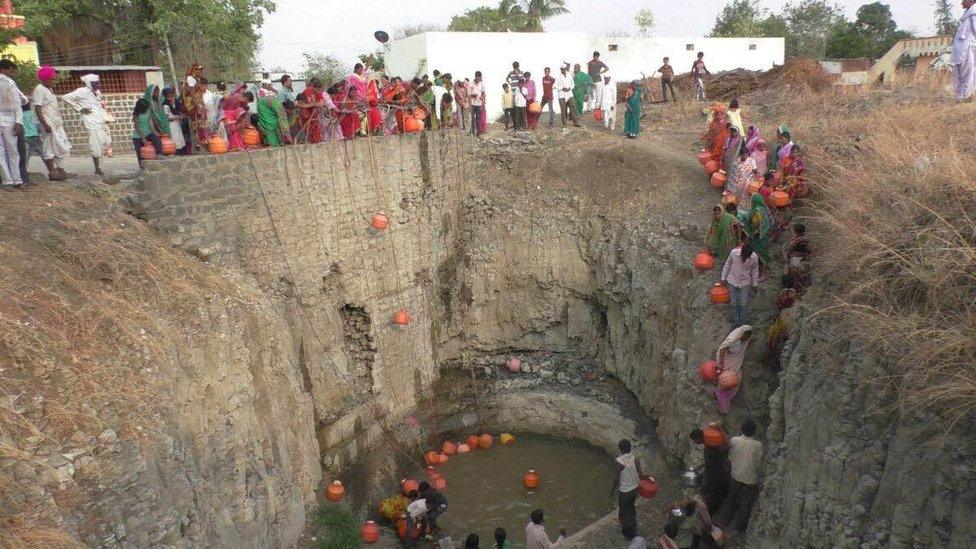
Only 300 of the nearly 700 sources of water in Beed have some water left
During the sun-baked, desultory afternoons, turbaned patriarchs doze on rope beds, cows chew cud morosely, young men gather around the few TV sets, and bored children put up a sign saying "Beer Bar" outside a cattle tent, provoking a few laughs. When night falls, they prepare for dinner, swat mosquitoes and, sometimes, watch out for snakes and scorpions.
There are 4,309 cattle and a solitary horse at the 40-acre camp which is ringed by dull brown hills. The horse is owned by a farmer, who rented it to out to village weddings in happier times.
Families have no money now, so the camp itself hosted a free mass wedding recently for 40 local couples under a colourful awning, organised a small feast, and gifted them steel cupboards. The shelter receives 70 tonnes of fodder and 200,000 litres of water every day, transported by trucks and tankers from as far as 40km (24 miles) away.
But this life of displacement and deprivation is exacting a terrible toll on its residents.
'Life of filth'
Twenty-two-year-old Vijay Baglane spent three years in college studying computer science. He was preparing for job exams, when drought forced him and the family's 10 head of cattle into the shelter last year. He's stuck at the camp looking after the cattle by himself because his father died two years ago and both his sisters are married. He says nothing has grown on his five-acre farm in the past four years.
"I want to live a peaceful life with a government job and a secure income. Instead, I am whiling away my time in such filth, and missing my exams," says Mr Baglane. "When it rains I can go back home. I want to sell my cattle and prepare for a job in the city. This farming life is not worth it."
It is a sentiment echoed by most farmers.
Beed has 2.7 million people and 830,000 cattle. Half of the district's 1,403 villages are in the grip of what is now the third year of severe drought. Most of the farms are rain fed.
The Manjara river - the main source of water - dried up last year. More than 60% of the 148 tanks and small dams have no water. Only 300 of the nearly 700 sources of water in the district have some water left. Some 850 tankers are ferrying water from private bore wells and tanks to parched villages.
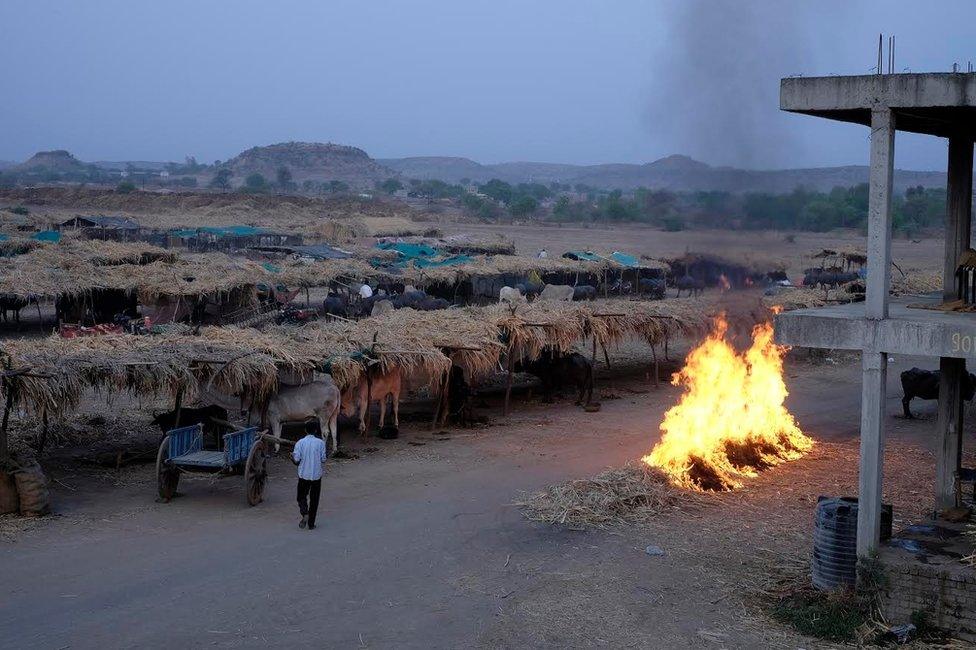
More than 1,500 farmers live in the Beed camp

Harsha Vardhan Wagmare, a landless farmer, bought some cattle and moved into a camp

Young men while away their time looking after the cattle

Beed has not received enough rain for the last four years

Vijay Baglane plans to sell off his cattle and get a government job
The main cotton and soya-bean crops have failed, and there's no fodder or water. Last year, more than 300 distressed farmers took their lives. Between January and March, 45 farmers have killed themselves. The living are flocking to cattle camps or abandoning their farms.
Across drought-affected Maharashtra, many blame indiscriminate sugarcane farming for the depleting ground water: the juicy cane occupies some 4% of the cropped farms in the state, but consumes two-thirds of its irrigation water.
'Dire situation'
"The situation is pretty dire. We are praying and hoping for a good monsoon this year. By the first week of June, we should know," says Nawal Kishore Ram, the senior-most official of Beed, who has set up a 24/7 'war-room' to keep tabs on water supply.
The Indians risking their lives for water
A lack of water and wives in India
Back at the camp though, some are turning the crisis into an opportunity.
Harsha Vardhan Wagmare, a landless farmer who cuts sugarcane for a living, took out a loan, bought 20 goats, traded them for three cattle, and moved into the shelter. "I have no land, so I bought cattle to sell milk, and live here with my animals."
But most are bristling with frustration and little hope. "We have been facing a famine of water for four years now. Drought is destroying lives and the social fabric. If it doesn't rain this year and we don't begin preserving our water, god help us," says Tatwashil Kamble, a social worker.